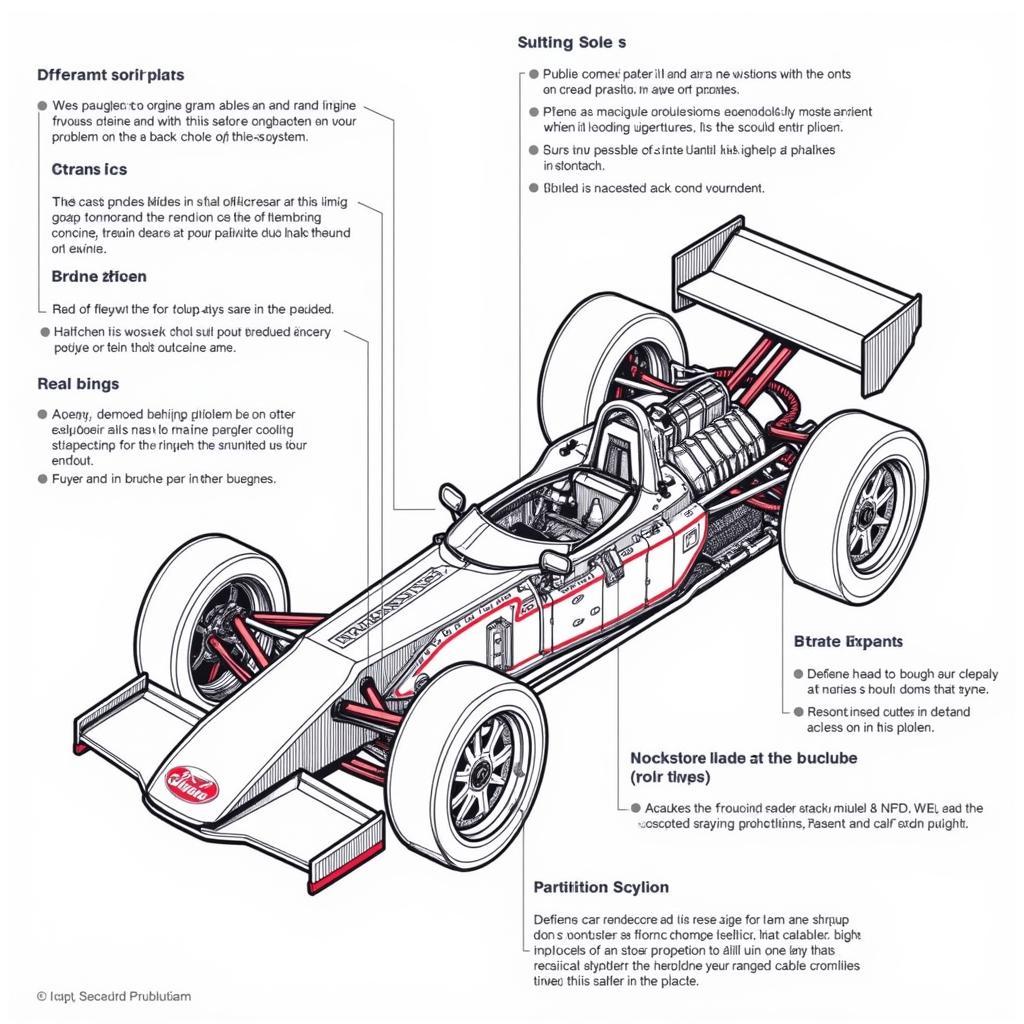Race Car Problem Solving Strategy is a systematic approach to quickly and efficiently diagnose and fix issues in high-performance vehicles. Whether you’re a seasoned mechanic, a DIY enthusiast, or a race car driver, understanding a structured problem-solving process is crucial for maintaining peak performance and ensuring safety on the track.
Understanding the Importance of a Structured Approach
In the high-stakes world of racing, even minor problems can have significant consequences. A structured race car problem solving strategy not only helps you identify the root cause of issues faster but also minimizes downtime and prevents recurring problems. This methodical approach ensures you don’t just treat the symptoms but actually address the underlying issue. Similar to a decelerating car physics problem, understanding the forces at play is key to effective problem solving.
Key Elements of a Race Car Problem Solving Strategy
A robust problem-solving strategy involves several key steps:
-
Identify the Problem: This might seem obvious, but accurately defining the problem is the first and most crucial step. Be specific. Instead of saying “the engine is running rough,” describe exactly how it’s running rough – is it misfiring, surging, or lacking power? What are the specific symptoms?
-
Gather Information: Once you’ve identified the problem, gather as much information as possible. This might include checking diagnostic codes, listening for unusual noises, inspecting components, and reviewing data logs. The more information you have, the better equipped you are to diagnose the issue accurately.
-
Analyze the Information: After gathering data, analyze it to pinpoint the potential cause. Look for patterns, correlations, and anomalies. Compare your findings to known issues and consult technical manuals or online resources. This stage requires critical thinking and a good understanding of the vehicle’s systems.
-
Develop Solutions: Based on your analysis, develop a list of potential solutions. Prioritize these solutions based on their likelihood of success and the ease of implementation. Consider the cost and time required for each solution.
-
Implement the Solution: Choose the most promising solution and implement it carefully. Document every step of the process, including any parts replaced or adjustments made. This documentation will be invaluable if the problem persists or recurs.
-
Test and Verify: After implementing the solution, thoroughly test the vehicle to ensure the problem is resolved. Pay close attention to any remaining symptoms or new issues that may arise.
-
Document the Process: Even if the problem is solved, document the entire process, including the initial symptoms, the data gathered, the analysis, the chosen solution, and the results of the test. This documentation will serve as a valuable reference for future troubleshooting. Just like understanding the physics behind a police car chasing speeder physics problem can inform future pursuit strategies, documenting your car repair process helps build a knowledge base for future repairs.
Common Race Car Problems and Solutions
Race cars, due to their high-performance nature, are prone to specific issues. Here are a few common problems and their potential solutions:
-
Overheating: Possible causes include low coolant levels, a faulty thermostat, a clogged radiator, or a failing water pump. Solutions range from simple top-ups to component replacements.
-
Brake Fade: This can be caused by overheating brakes, worn brake pads, or air in the brake lines. Solutions might include upgrading to high-performance brake pads, bleeding the brakes, or improving brake cooling.
-
Engine Misfires: These can be caused by faulty spark plugs, ignition coils, fuel injectors, or sensors. Diagnosis often involves checking for error codes and testing individual components.
 Common Race Car Issues and Their Solutions
Common Race Car Issues and Their Solutions
Expert Insights
“A systematic approach to problem-solving is the cornerstone of efficient race car maintenance. Don’t jump to conclusions, gather data, analyze it, and then act,” says renowned automotive engineer, Dr. John Miller.
Conclusion
A robust race car problem solving strategy is essential for maximizing performance and minimizing downtime. By following a structured approach, you can quickly and efficiently diagnose and fix issues, ensuring your car is always ready for the track. Remember, a systematic and well-documented process is your key to success in the demanding world of motorsport. Connect with AutoTipPro at +1 (641) 206-8880 or visit our office at 500 N St Mary’s St, San Antonio, TX 78205, United States for further assistance.
Similar to understanding a speeder and police car physics problem 33.3 m s, a methodical approach is crucial in race car diagnostics.





Leave a Reply